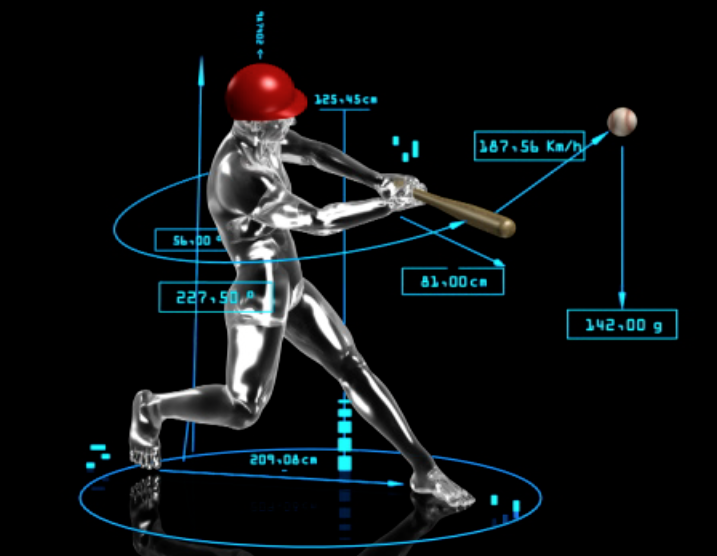
From a Vague Instinct to a Deliberate Science: Everything You Need to Know About Batter Swing Timing Explained
By Ken Cherryhomes ©2025
Introduction: The Foundation of Timing in Hitting
This article examines batter timing independent of the load sync process. While syncing a batter’s preparatory moves with a specific point in the pitcher’s windup is important and an aspect of timing, it only sets the foundation for the more complex task of timing the swing itself.
Synchronizing with the pitcher’s motion can be mastered; a batter can match their load and stride rhythmically with the pitcher’s release to establish a rhythm. However, the critical challenge lies in the swing decision—the precise moment to initiate the bat’s path based on the pitch kinematics.
To illustrate how syncing with the pitcher and swing decision timing work together in practice, let’s look at examples with Nelson Cruz compared to Albert Pujols. Their approach to timing and loading provides a practical view of how professional hitters use these elements.
In this demonstration, we break down the mechanics of Cruz’s and Pujols’ timing in relation to the pitcher’s windup and release.
After the sync, the batter faces the most critical aspect of timing: visually tracking the ball, assessing its velocity, and interpreting the trajectory to decide when and where the bat should meet the ball. This decision, a dynamic calculation occurring in mere milliseconds, is fundamentally what determines the success of a bat-ball collision.
Mastery of this phase enables the batter to react effectively to variations in pitch speed, movement, and location, proving that syncing with the pitcher is a preparatory step, while the true test of timing lies in the swing decision itself.
Understanding Contact Points and Swing Timing
To understand swing timing, you must first understand contact points, as they help reduce the chaos that arises from trying to time and locate a moving ball within the three-dimensional strike zone. In hitting, chaos is introduced by the unpredictable variables of pitch speed, location, and trajectory. Establishing contact points reduces this complexity by setting fixed parameters for where the bat’s sweet spot should meet the ball, regardless of pitch type or velocity. By defining these specific, reliable collision points within the swing’s arc, contact points provide a structured framework that allows hitters to focus solely on timing adjustments rather than recalibrating both timing and mechanics for every pitch.
Timing in the swing is essentially about synchronizing the bat’s arc and batter’s intent with the ball’s trajectory. Imagine you’ve developed an ideal swing that’s become automatic. As the barrel tracks through the hitting zone, the sweet spot of the barrel moves rapidly, arcing to and then almost instantly away from one collision point to the next. Depending on pitch location, the sweet spot will align optimally with the ball at different depths along the swing’s arc. An identical swing path can contact a ball thrown to any pitch location—but for optimal impact on the sweet spot, the barrel must arc to a precise depth where both the sweet spot and the ball arrive simultaneously.
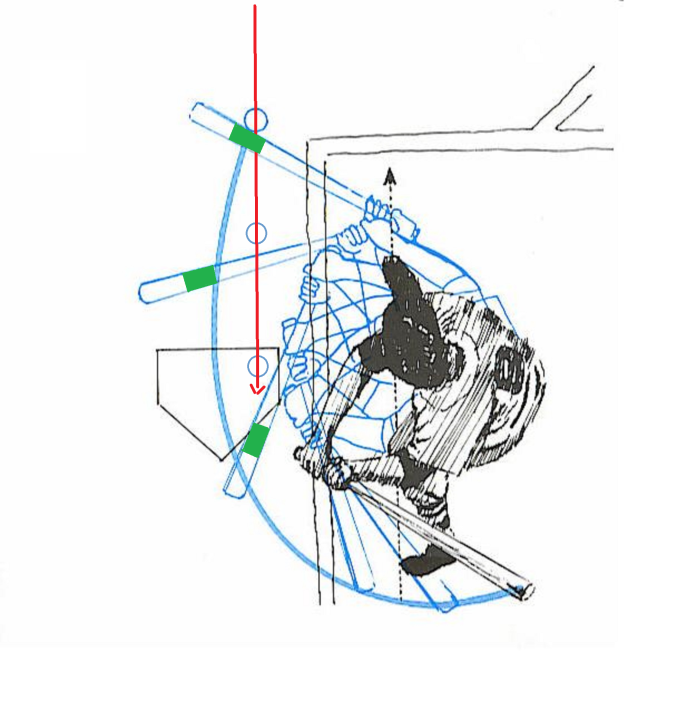
Practicing Contact Depths: Building Spatial Awareness
Gaining an understanding of contact points and depth can be practiced with a ball positioned at different locations in the strike zone. The trajectory of the hit ball results from the angle of the bat’s barrel at the moment of contact.
As illustrated in the image below, we see an overhead view of a batter’s swing approaching three different pitched balls, each delivered at the same velocity to different locations. This view demonstrates how the swing path intersects the hitting zone, but only one of the balls will align with the sweet spot of the bat due to the identical depth across all pitches. This emphasizes that, despite a consistent swing path, timing adjustments are crucial for optimizing contact across various pitch locations.
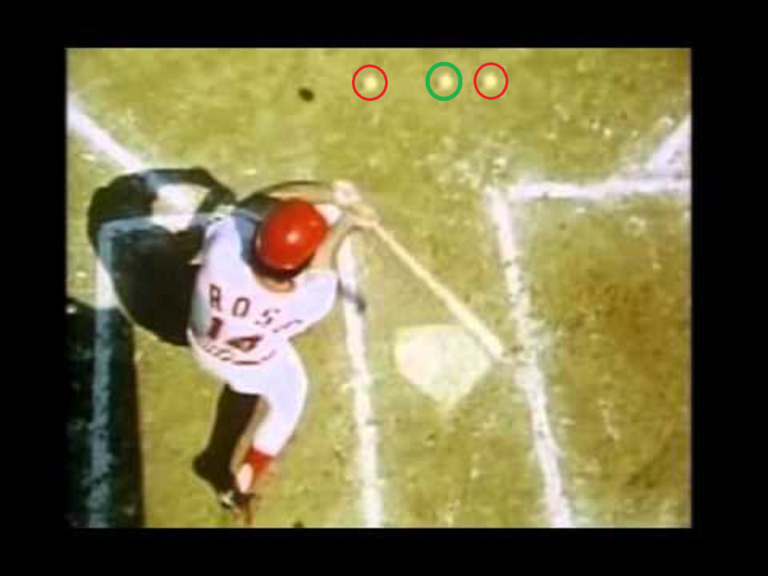
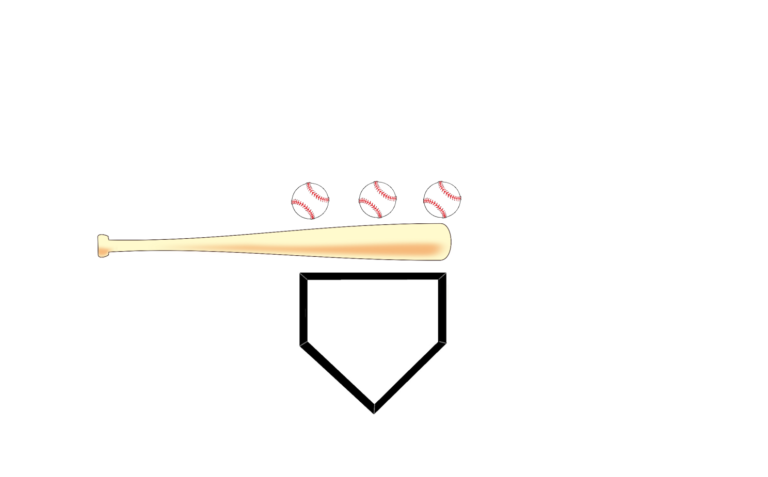
This second image isolates these three balls and highlights their relationship to the bat’s sweet spot along a single depth line. It reinforces the idea that achieving optimal contact requires the sweet spot to align with the ball at specific depths. For pitches at different locations, the batter must adjust the timing of their swing so that the bat’s sweet spot arrives at the correct contact depth for each location, illustrating that precision in timing is just as critical as the swing’s path.
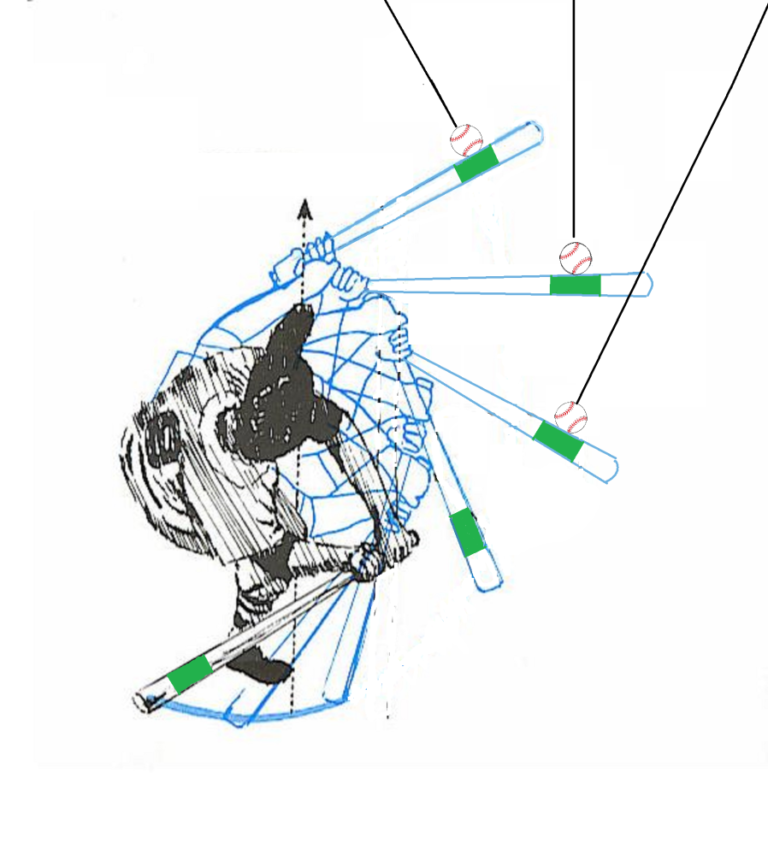
Together, these images underscore the importance of both timing and spatial awareness in synchronizing the bat’s arc with the ball’s trajectory for consistent, powerful contact.
By first understanding contact points—where no actual ‘timing’ or temporal prediction is involved—we lay the foundation for understanding timing with a moving pitch. This approach begins with spatial alignment within the swing’s arc, ensuring that the bat’s sweet spot meets the ball at the optimal depth for each pitch location. Focusing on these specific points of contact removes the need for abstract temporal predictions and instead grounds timing in a concrete understanding of spatial positioning.
Engaging Proprioception: The Role of Spatial Memory
Although there is no moving ball in this setup, using tees to practice contact points is an essential aspect of timing that engages the batter’s proprioceptive system. Proprioception—the body’s ability to sense its position and movement in space—allows the batter to internalize the fixed contact points within the swing arc at different depths. By practicing with static balls on tees, the batter builds an intuitive sense of where each contact point lies along the swing path. This process creates a ‘mental map’ of the bat’s spatial relationship to the ball, ingraining the precise depths where the sweet spot aligns with various pitch locations.
Through repetitive practice, proprioception helps encode these positions into muscle memory. As a result, when a moving pitch is introduced, the batter can rely on this internalized spatial awareness to time their swing, instinctively adjusting to align with the optimal contact points they’ve already learned. In this way, tee work not only develops mechanical consistency but also primes the batter’s proprioceptive sense for dynamic timing against live pitching.
By starting with a static ball on a tee, we establish the fixed locations within the swing arc where optimal contact occurs at different depths. When applied to a moving pitch, these principles remain unchanged: each pitch, regardless of velocity, aligns with one of these fixed contact points. Thus, timing with a moving pitch becomes a matter of initiating the swing so that the bat reaches the correct depth as the pitch crosses the plate.
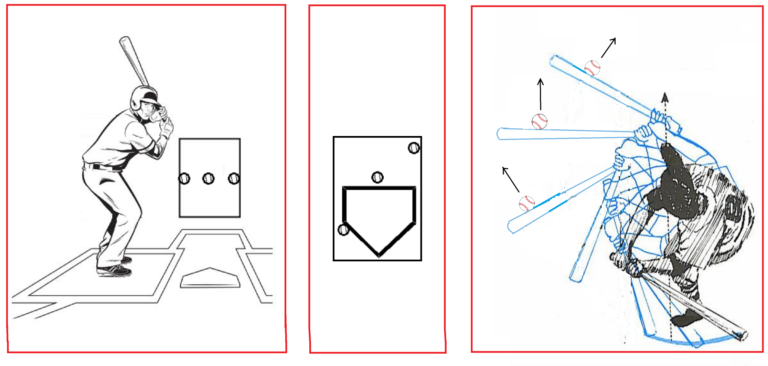
These fixed positions within the swing arc teach us that, regardless of whether the batter is positioned in the front, back, or center of the batter’s box, the contact points remain anchored to the batter’s body and swing, relative to the ball rather than to home plate. This means that the spatial relationship between the batter’s body, the bat, and the ball remains consistent, independent of where the batter stands in the box.
By practicing these contact points at various depths, the batter internalizes where optimal contact occurs for each pitch location, understanding that the contact points are inherently bound to their own swing mechanics. This awareness allows for greater adaptability, as the batter can shift their position within the box without disrupting the internalized spatial alignment necessary for effective contact.

While shifting forward or back within the batter’s box doesn’t alter the learned contact points, moving closer to or farther from the plate can challenge the batter’s proprioceptive understanding of the strike zone. When the batter adjusts their lateral distance from the plate, they alter their practiced spatial awareness of the zone, which can complicate their perception of what qualifies as a strike.
In these scenarios, the constant contact points in the swing arc still apply, but the batter’s spatial relationship to the strike zone itself is compromised. This adjustment makes it harder to judge whether a pitch is in or out of the zone without relying on the plate as a visual reference. With each lateral shift, the batter’s established ‘feel’ for the strike zone can become distorted, as pitches that previously seemed on-target may now appear deceptively close or far. Thus, while the integrity of contact points remains, the batter’s perception of the strike zone requires recalibration, as the relationship between their swing path and the plate has changed.
Applying Contact Points to Live Pitching
The key takeaway is that the spatial locations of these contact points are constant within the swing arc; the bat’s path remains the same whether the ball is stationary or in motion. Faster pitches compress the batter’s reaction window but do not change the fundamental geometry of the swing. This means that what we’ve learned about contact points and depth on a tee translates directly to live pitching, with timing adjustments occurring in the swing’s initiation rather than its trajectory, allowing batters to apply this knowledge fluidly as pitch speeds vary. The batter’s goal, then, is to adapt their internal clock to reach the same predetermined points, regardless of the pitch’s velocity.
When a moving pitch is introduced, prior knowledge of learned contact points becomes actionable as we correlate our proprioceptive sense of these points with the speed and trajectory of the incoming ball. For ‘time’ to be measured and actionable in this context, it requires both a starting and an ending point—the initiation of the pitch, followed by a prediction of when and where it will arrive, coupled with the timing of when the sweet spot of the barrel will reach that point. By learning and internalizing these contact depths through tee work, this effectively enables us to close the ‘event time’ window when facing a moving pitch, creating a quantifiable beginning and end point for the event. This means that the batter’s timing isn’t an estimate or broad approximation; it’s now measured and precise, with a clear start (pitch release) and a targeted endpoint (optimal contact depth). Instead of relying on abstract timing predictions, the batter can use their proprioceptive map of contact points to precisely initiate the swing, knowing exactly where and when the bat needs to be in space.
This internalized understanding allows the batter to make rapid, informed adjustments as the ball approaches. Rather than approaching timing as an open-ended calculation for each pitch, the batter can rely on their spatial awareness of fixed contact points as precise references for optimal contact depth. By identifying the intersection point as a fixed reference, we enable a more precise calculation, as the batter knows exactly where the sweet spot should meet the ball for optimal contact. In essence, the learned contact depths act as predetermined targets, enabling the batter to sync up with the pitch in a more controlled and repeatable manner.
Contact Points Timing Drill: 3ft-2ft-0ft drill
Once you understand contact point depth to three common pitch locations, you can begin applying these points of contact to controlled live ball practice sessions. The video introduces the 3-2-0 Drill, a training method designed to help batters practice timing and contact points at three key pitch locations: inside, middle, and outside. The batter is positioned so their front foot aligns with the front edge of the plate, providing a consistent reference for contact points. Using a combination of tee work and short tosses, the drill emphasizes the importance of timing adjustments without altering the batter’s stance, swing shape, or swing direction.
The drill starts with the middle pitch to warm up, then moves to pitches at varying locations. Specific distances (2 feet over the middle, 3 feet inside, and 0 feet outside) are measured from the batter’s front foot, not the plate. The instructor controls pitch speed to match the batter’s swing timing, aiming for precise contact at each point.
Initially, the batter is informed about the pitch location, progressing from predictable to randomized pitches, challenging them to adapt in real-time. By reinforcing temporal (when) and spatial (where) awareness of contact points, this drill quickly improves the batter’s ability to hit pitches to all fields, helping them adjust timing effectively and hit with accuracy.
This video explains how batters can make precise adjustments to their timing and positioning using the 3-2-0 Drill framework. When a batter makes an error—such as pulling an outside pitch on the ground—they can now diagnose the mistake by considering three key factors: the pitch location, the intended contact point depth, and the ideal attack distance for hitting to the correct field (pull, center, or opposite field). For instance, if contact with an outside pitch occurs one foot in front of their front foot rather than behind it, the batter can determine precisely, in feet, how early they were with a precise prescription on how to correct their error.
Coaches are encouraged to prompt the batter to analyze their mistake by asking about the pitch location, where the ball went versus where it should have gone, and by how many feet their timing was off. Through practice, batters internalize these spatial and temporal adjustments, eventually applying them independently. This approach enables batters to consistently make well-timed contact, accurately hitting inside, outside, and middle pitches to all fields.
Here I discuss how batters learn to extrapolate their timing decisions at greater velocities. Key to this is in understanding contact point depth for the various pitch locations, as the contact points themselves remain unchanged by changes in pitch velocity. This video addresses how batters can practice contact points at game speeds and distances, focusing on optimal contact points that yield the best outcomes, such as high exit velocity or consistent hits. The process involves analyzing where contact is made in comparison to ideal contact points for different pitch locations. While this is a gradual learning process with frequent trial and error, each successful contact helps the batter build a mental reference point for future pitches with similar speeds and locations.
The instructor explains that by understanding contact points and calculating timing based on speed and distance could theoretically help batters achieve ideal timing more consistently. However, pinpointing the exact moment a batter decides to swing—especially for pitches of varying speeds and locations—requires additional technology. That is where X Factor Technology comes in.
Is Contact Points Awareness Actionable In-Game?
Absolutely. Consciously or subconsciously, we rely on these internalized maps to make in-game swing decisions and timing adjustments. This internalized understanding allows the batter to make rapid, informed adjustments as the ball approaches. Rather than approaching timing as an open-ended calculation for each pitch, the batter can rely on their spatial awareness of fixed contact points as precise references for optimal contact depth. By identifying the intersection point as a fixed reference, we enable a more precise calculation, as the batter knows exactly where the sweet spot should meet the ball for optimal contact. In essence, the learned contact depths act as predetermined targets, enabling the batter to sync up with the pitch in a more controlled and repeatable manner.
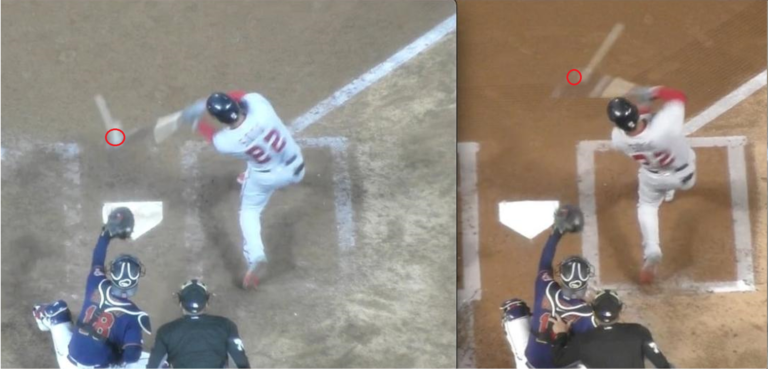
Building Timing Memory Through Repetition
Whether we realize it or not, we’re already using this process when we practice hitting. Each successful swing collision is subconsciously correlated with proprioceptive markers—the spatial cues our bodies register with every effective contact. By examining and recognizing the contact point depths that yield optimal outcomes, we’re actively building a ‘timing memory’ tied to the pitch’s velocity, location and depth of contact. This memory becomes a reliable reference, guiding us toward precise swing initiation and actionable adjustments.
Understanding these contact points and their depths provides us with a more deliberate approach to improving our hitting. Instead of relying solely on trial and error, we can accelerate our expertise by embedding a mental map of these spatial targets. This not only sharpens our ability to repeat successful swings but also equips us with a powerful framework for making corrections and adjustments when faced with new or challenging pitches. Recognizing this often-overlooked aspect of learning to hit allows us to refine our skills with a clearer, more efficient focus.
Standardized Contact Points Maps: Enhancing Precision Across the Strike Zone
While we’ve discussed the importance of contact depths for three common pitch locations, a standardized contact points map expands this concept to cover all pitch locations within the strike zone. This approach provides a highly detailed, three-dimensional understanding of where optimal contact occurs for any pitch, creating a more comprehensive and reliable system for aligning a batter’s swing with varied pitch trajectories and depths.
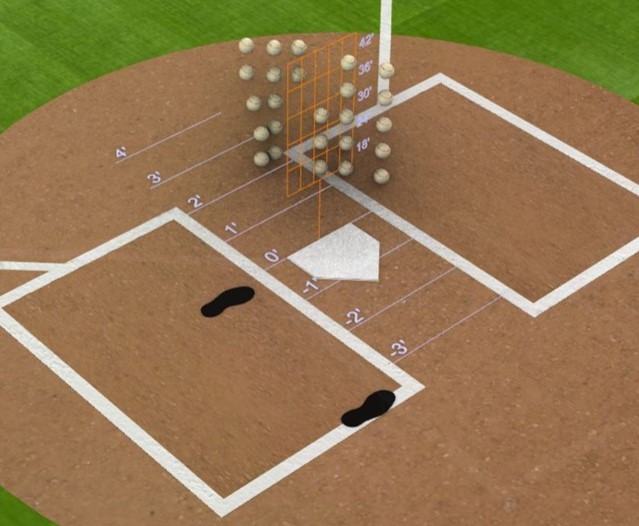
Standardized contact points maps give batters a precise reference for each location in the strike zone, integrating the learned principles of timing and contact depth across multiple scenarios. By practicing with this system, batters refine their timing memory not only for select pitches but for the entire strike zone. This systemized approach offers several advantages:
- Consistency Across Pitch Locations: With standardized reference points, batters gain a reliable framework that translates to any pitch location, removing guesswork and enabling consistent contact regardless of the pitch’s depth or lateral position.
- Granular Awareness of the Strike Zone: Standardized mapping allows batters to mentally organize the strike zone into actionable contact depths, honing their ability to make split-second timing decisions with increased confidence.
This standardized mapping frees both the batter and coach to focus on refining the batter’s optimal swing without needing to adjust mechanics for each pitch location. By anchoring each contact point to a fixed depth within the strike zone, standardized maps streamline training by prioritizing timing adjustments alone. This reduces cognitive load on the batter, allowing them to focus on recognizing pitch locations and making targeted timing adjustments. As a result, both coach and batter can direct their energy toward perfecting the batter’s timing within a consistent swing path, supporting more efficient and repeatable performance.
By establishing fixed, reliable contact points throughout the zone, standardized maps bring greater precision to timing practice. They allow the batter to approach each pitch location with a consistent, systematic understanding of where and when to initiate contact, ultimately supporting a more adaptable and controlled approach to hitting.
Advancements in Technological Solutions
This final video introduces a technological solution designed by X Factor Technology to help batters practice timing and contact points against high-velocity pitches. A swing capture device records and maps a batter’s swing time to 25 optimal contact points and programs them to sync with pitch velocity at various locations. When a pitch is released, a second device captures its speed, then an algorithm matches it with the batter’s specific swing time to that contact point, issuing a Swing Alert™, a precisely timed cue, alerting the batter to initiate their swing.
In the demonstration, a programmed pitching machine delivers pitches randomly to inside, outside, and middle locations without prior indication to the batter. The system then captures the pitch, calculates when the batter must initiate their swing based on the velocity of the pitch, the pitch location and the optimal contact depth for that pitch. Each successive, successful swing aligns with the appropriate contact point, yielding ideal hits to left, right, and center fields. The real-time swing times are logged in a database to verify accuracy and consistency without editing, showcasing the technology’s ability to deliver precise, repeatable outcomes.
Conclusion: Enhancing Timing Through Contact Points Awareness, Systematic Contact Points Mapping, and Technology-Driven Practice
In this article, we’ve explored how mastering timing and contact depth can dramatically improve a batter’s effectiveness at the plate. By understanding the mechanics of contact points and the single swing arc’s adaptability across different pitch locations, batters gain precise control over their swing’s temporal and spatial demands. Our drills and techniques—particularly the 3-2-0 Drill and standardized contact points mapping—help batters internalize spatial awareness, streamline adjustments, and achieve consistent contact through a systemized approach.
The incorporation of proprietary technology introduces an actionable, data-driven solution that ensures timing accuracy against high-velocity pitches. The system calculates optimal timing cues tailored to each batter’s unique swing profile, reinforcing the timing and decision-making skills critical for performance.
Looking forward, we welcome the question of whether or not this technology and methodology, already tested successfully in pilot sessions, can extend its benefits more effectively than standard practice methods. To answer this, we proposed a comprehensive peer-reviewed study focused on memory encoding, spatial awareness, and timing accuracy through cue-based, errorless training.
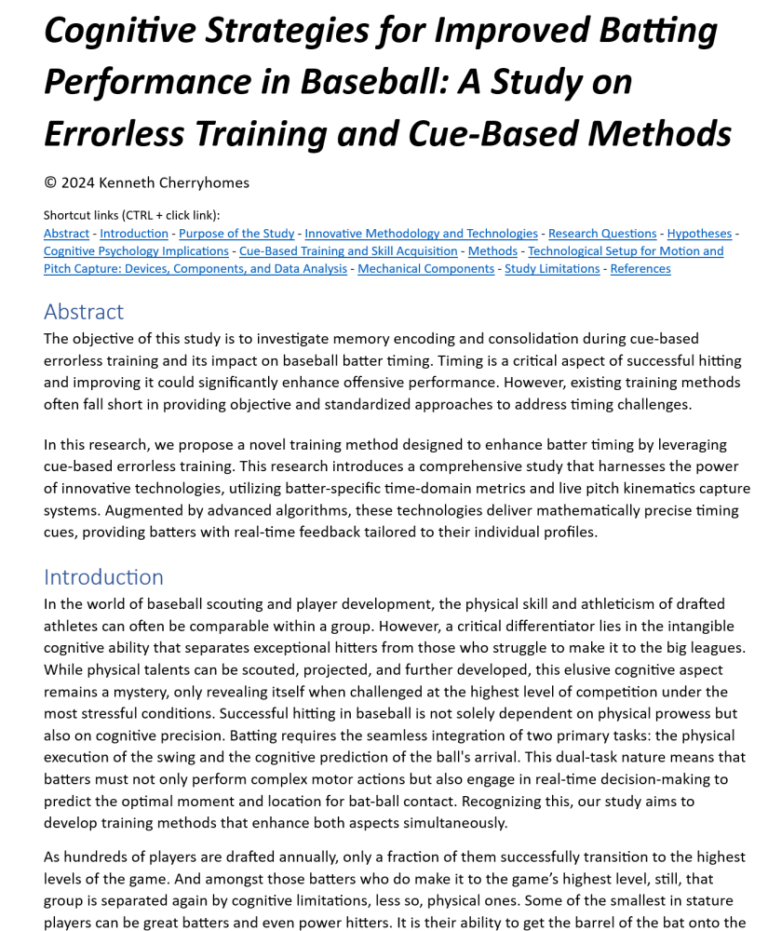
This study aims to empirically evaluate our approach, validating whether technology-enhanced training can optimize timing and offer a systematic path for skill acquisition in baseball and beyond.